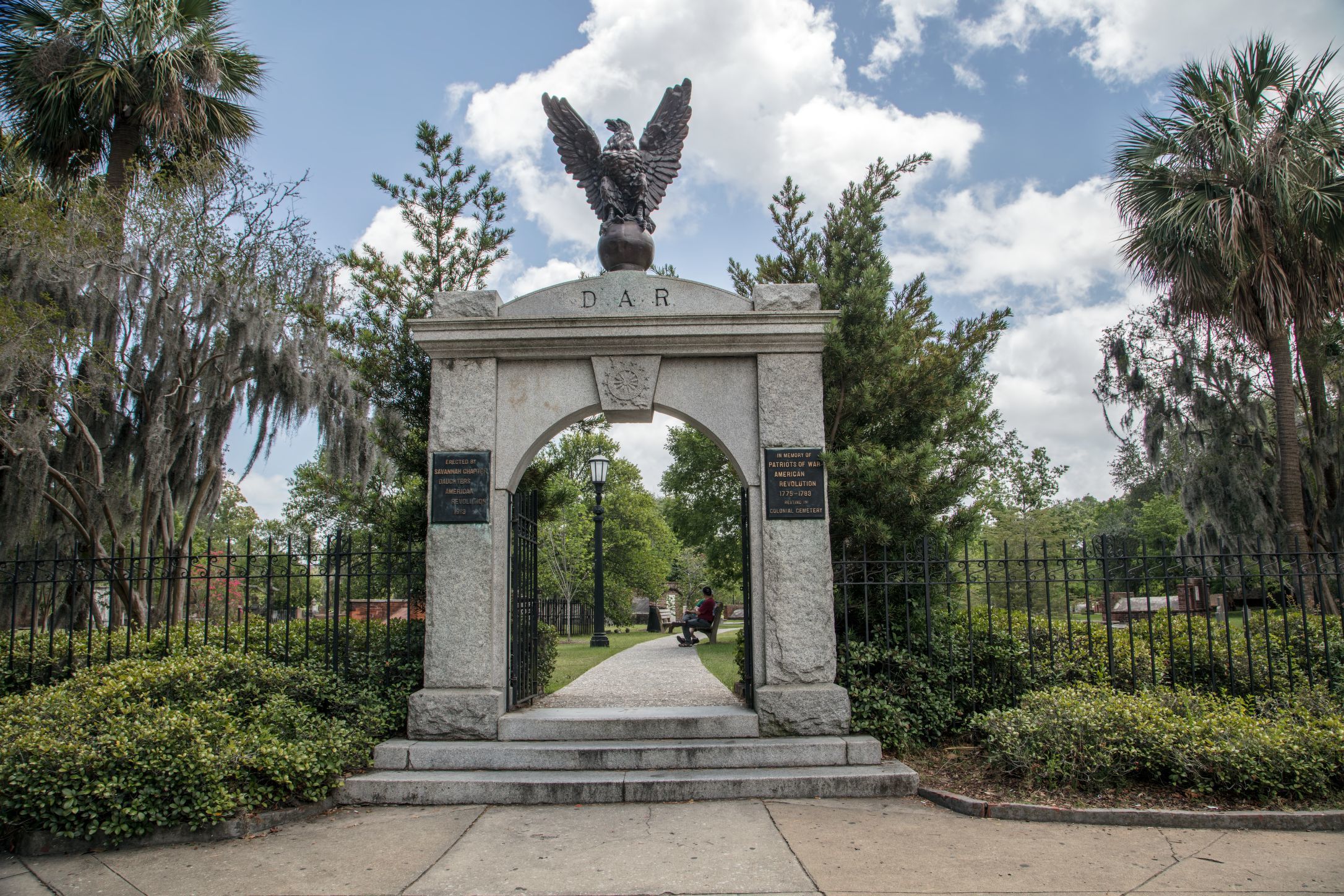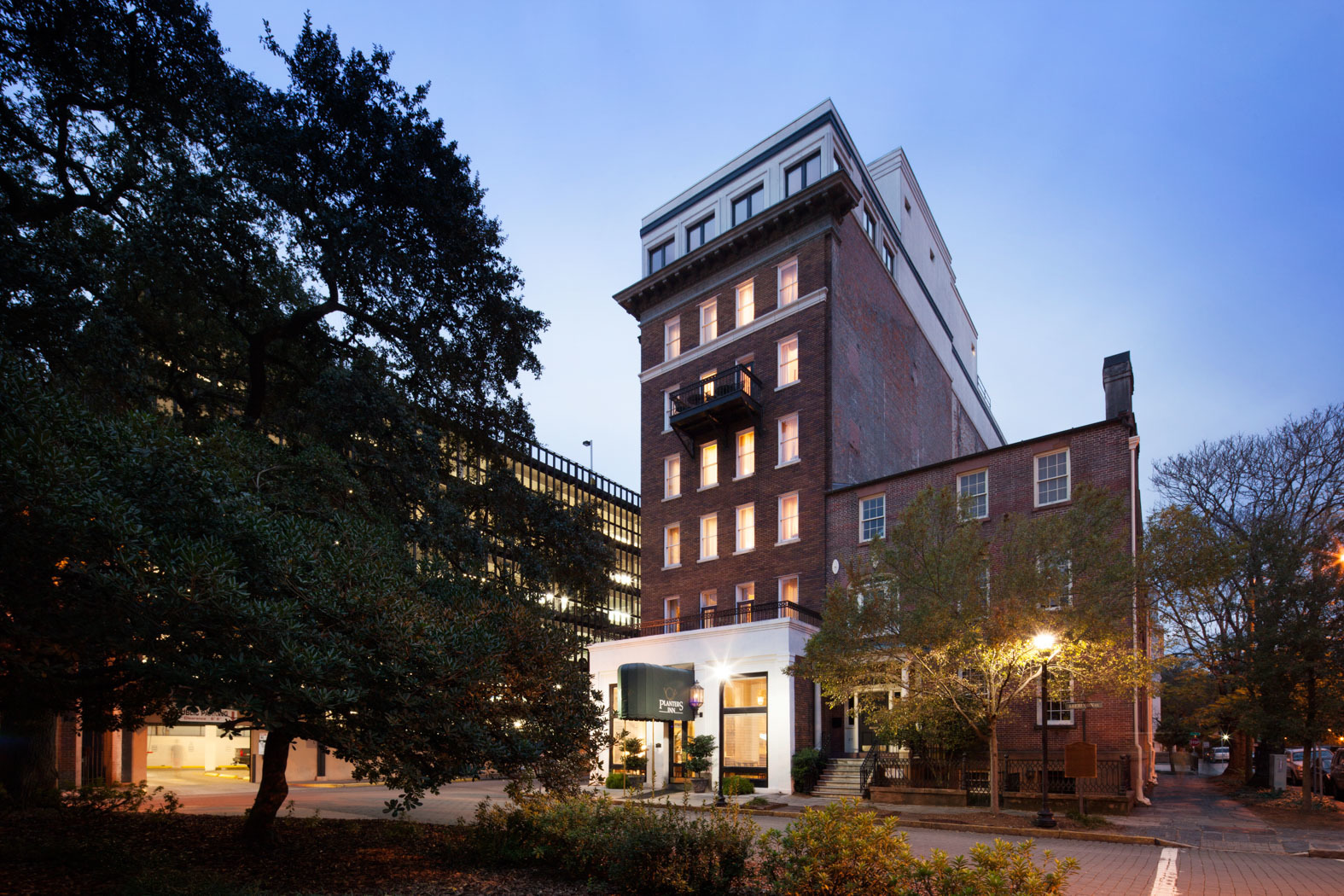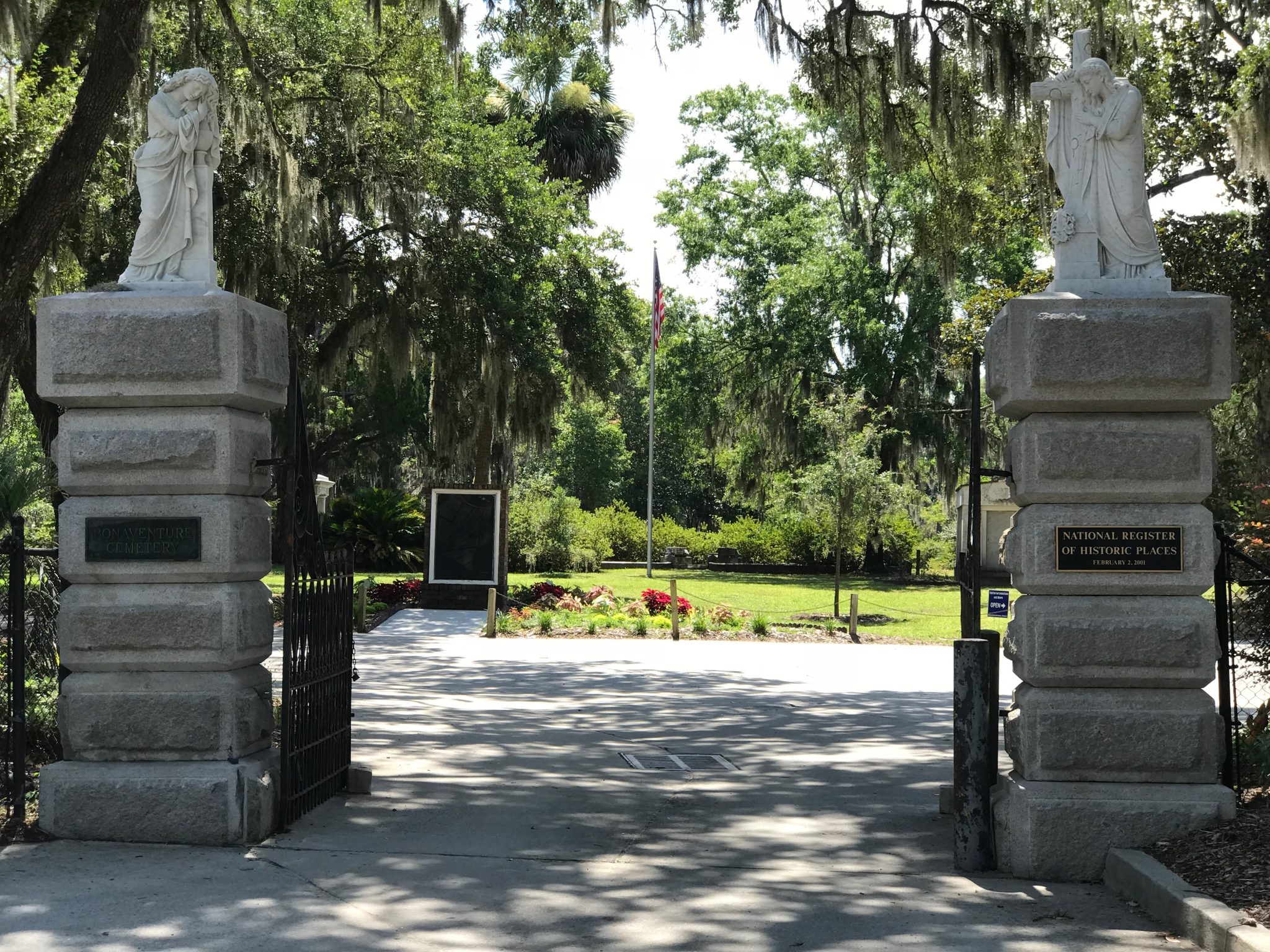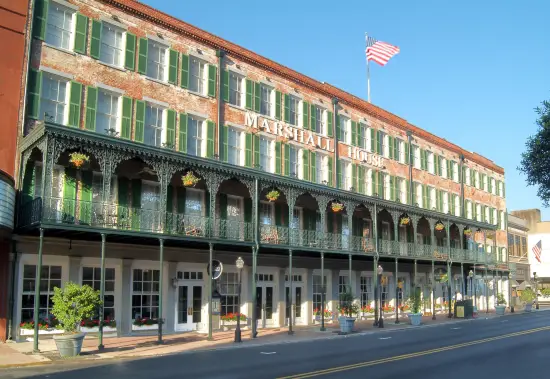Rated by USA Today and CNBC as one of the most haunted city in the United States, Savannah have attracted throngs of thrill-seekers and paranormal investigators to its vast number of haunted spots. Colonial Park Cemetery in particular, is one of the most popular haunted destination due to the countless reported sightings and ghostly videos posted online.
On December 31, 2008, Jesse Greathouse was on a vacation with his family to Savannah when he decided to visit the infamous Colonial Park Cemetery. During his exploration, he captured the chilling footage of a child running towards a shadowy figure. Then, the translucent figure suddenly jumped onto a tree before dropping to the ground and vanishing. Several experts have determined that the video is authentic and that no special effects was used. A copyright was even filed on the ghostly video, forbidding anyone to air it unless permission is given. However, no one have yet to conlude who, or what the translucent figure is.
In July 2019, Colonial Park Cemetery ree into spotlight when security guard Joshua Runyan uploaded several clips of his terrifying encounter with the supernatural on TikTok.
In one of his video, Runyan was locking up a mausoleum when he heard a disturbance in the building. When he asks if anybody is in the building, the faint voice of a child can be heard saying, “Hello? Can you help her?”
In another video, Runyan was patrolling the area when he spotted the lights flickering in the chapel. Upon entering the Chapel, a disembodied scream can be heard from the inside.
History of Colonial Park Cemetery
Established in 1750, Colonial Park Cemetery (also known as Colonial Cemtery) was one of Savannah’s earliest cemetery. Originally built for the Christ Church Parish, the cemetery quickly became the default burial ground for local Savannahians. By 1789, the cemetery had expanded to six acres, three times its original size. Today, the park is cornered by Abercorn Strt, E Oglethorpe Ave, E Perry Ln, and Habersham St.
From 1740 up until 1877, Colonial Park Cemetery was said to be the city’s dueling ground for men who sought to settle their disputes with swords and pistols. Challenges were issued in the local newspapers and storefronts where one would openly call for the duel with his opponent. One of the most renown duel that have ever happened was General Lachlan McIntosh against Button Gwinnett, who was one of the signer of the Declaration of Independence. The story says that the two have been constantly at odds in the military and political sphere. One day, McIntosh issued a challenge to Gwinnett for a duel. During the duel, Gwinnett was struck in the thigh while McIntosh received a shot to the leg. McIntosh won the match three days later when Gwinnett passed away from his wound. McIntosh was later charged by Gwinnett’s allies but was acquitted in the trial.
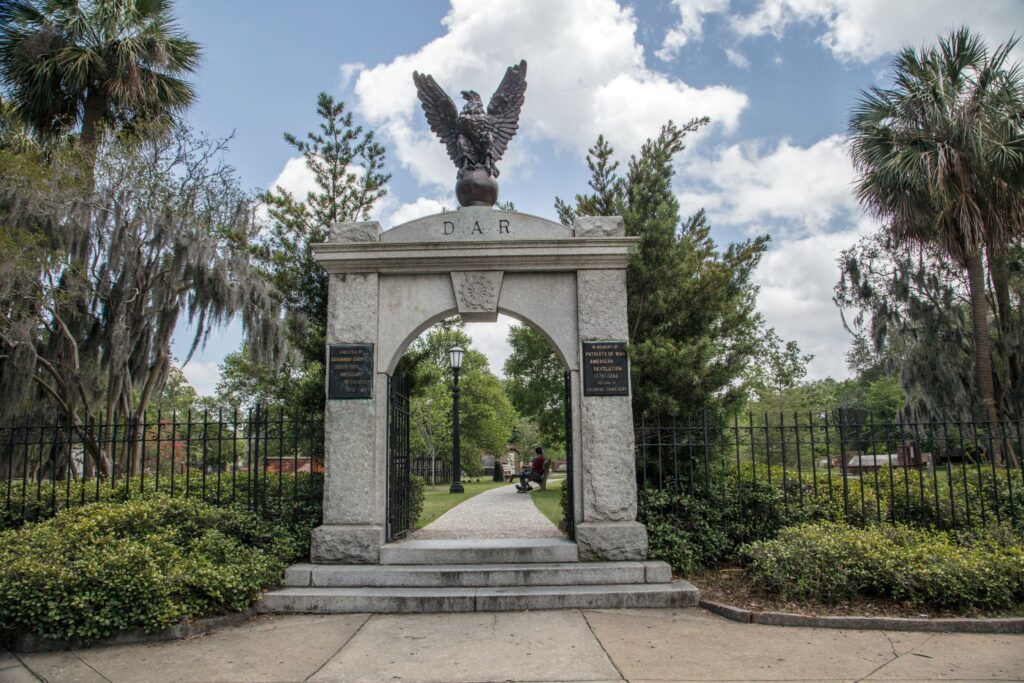
In 1853, Colonial Park Cemetery reached its burial capacity, prompting the local council to cease burials in the cemetery. Today, the cemetery is estimated to house over 9,000 graves.
During the American Civil War (1861 – 1865), it was alleged that the cemetery was vandalized by Union troops who have occupied Savannah. Several of the stone markers were found to have been desecrated by engravings been made onto existing inscriptions.
In 1896, Colonial Park Cemetery became a city park. Over the 19th century, multiple attempts were made to redevelop the land for commercial and residential developments. However, it was largely opposed by the local community who sought to preserve one of the oldest cemetery in Savannah. Major restorations have also taken place over the 20th century to clean up the site and restore the tombstones.
Famous Graves at the Cemetery
As one of the oldest intact cemetery in the Savannah, Colonia Park Cemetery is known to be the final resting place for many luminaries and politicians who have served Georgia and the United States, including:
- Archibald Bulloch (1730–1777), first governor of Georgia and great-great-grandfather of Theodore Roosevelt
- Samuel Elbert (1740–1788), brigadier general and governor of Georgia
- Button Gwinnett (1735–1777), provisional president of Georgia and signer of the Declaration of Independence
- James Habersham (1712–1775), acting royal governor of the Province of Georgia
- John Habersham (1754–1799), member of the Continental Congress and son of James Habersham
- Joseph Habersham (1751–1815), Postmaster General of the United States and son of James Habersham
- Edward Malbone (1777–1807), renown painter and miniaturist
- Lachlan McIntosh (1725–1806), major general in the Continental Army
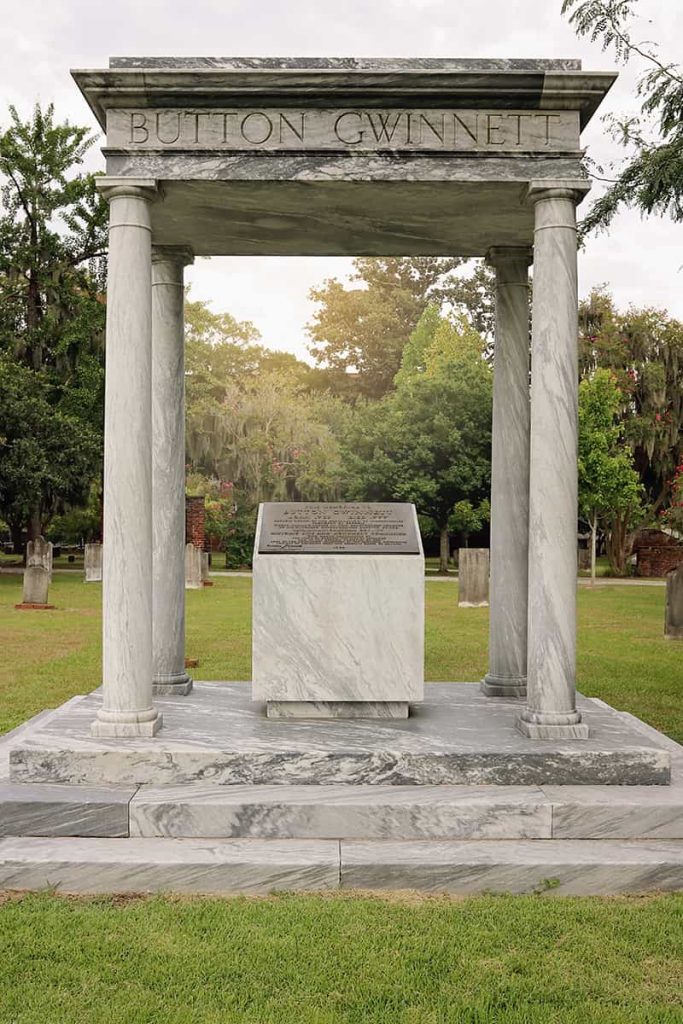
Major general Nathanael Greene, a major general of the Continental Army in the American Revolutionary War, was interred at the Graham Vault in the cemetery for over a century. In 1902, his remains was relocated to a monument in Johnson Square. Apart from the notable burials, over 700 victims who have perished during the 1820 Yellow Fever epidemic are also interred here.
Another popular burial ground in Savannah is Bonaventure Cemetery, which is famous for the Bird Girl statue as well as the haunted sighting of the spirit of Gracie Watson.
Legend of Rene Asche Rondolier the Child Killer
Born in 1777, Rene Asche Rondolier was an troubled resident of Savannah who grew to become the town’s infamous child killer. Legend says that Rondolier was a sadistic individual who took pleasure in killing small animals and terrorizing children with his burly size and. At fifteen years old, Rondolier was over seven feet tall and possessed abnormal human strength.
This local lore soon takes a dark turn when young children began disappearing.
One night, the lifeless body of a young girl was discovered on Warren Square near Foley’s Alley (no longer in existence) where Rondolier and his family lived. As the girl was found dead in a similar fashion to how Rondolier killed the animals, the general consensus was that Rondolier was the murderer. In spite of any concrete evidence, a mob gathered outside Rondolier’s house, demanding for his life. Rondolier was supposedly dragged to Warren Square where he was hanged from an oak tree and beaten. Rondolier reportedly struggled for over ten minutes before suffocating to death. He was later interred in at Colonial Park Cemetery in an unmarked grave.
However, months after Rondolier’s death, the killing of young children continued. While some believed that Rondolier was not the killer and that the murderer is still at large, many believed that it was the ghost of Rondolier who continued the heinous crimes.
Today, the spirit of Rene Asche Rondolier is said to haunt Colonial Park Cemetery. Thrill seekers who visit the cemetery at night would report seeing a tall shadow moving across the trees in the park. At Warren Square, visitors have reported seen a huge individual walking across the site. It is also said that one can also hear the crying of a young girl near a tree where Rondolier was supposedly hanged.
Nonetheless, the legend of Rene Asche Rondolier remains nothing more than a myth that was popularised in the early 20th century. Till date, there are no evidence suggesting the existence of Rondolier, nor were there official records of him in Colonial Park Cemetery. The claim that Rondolier was the inspiration behind Mary Shelley’s famous novel Frankenstein is also largely unfounded as there are no proof to support such preposterous assertions

